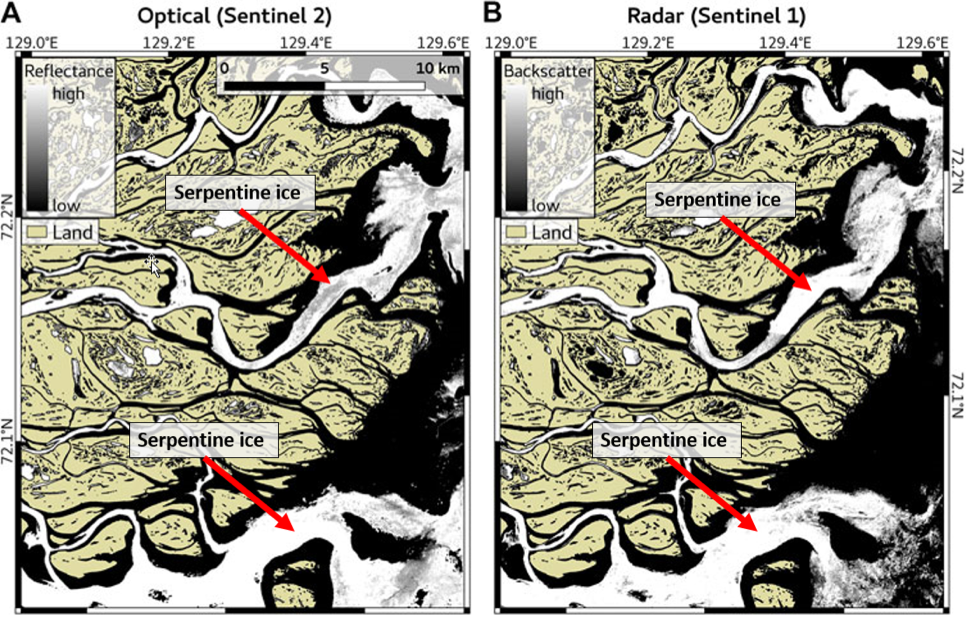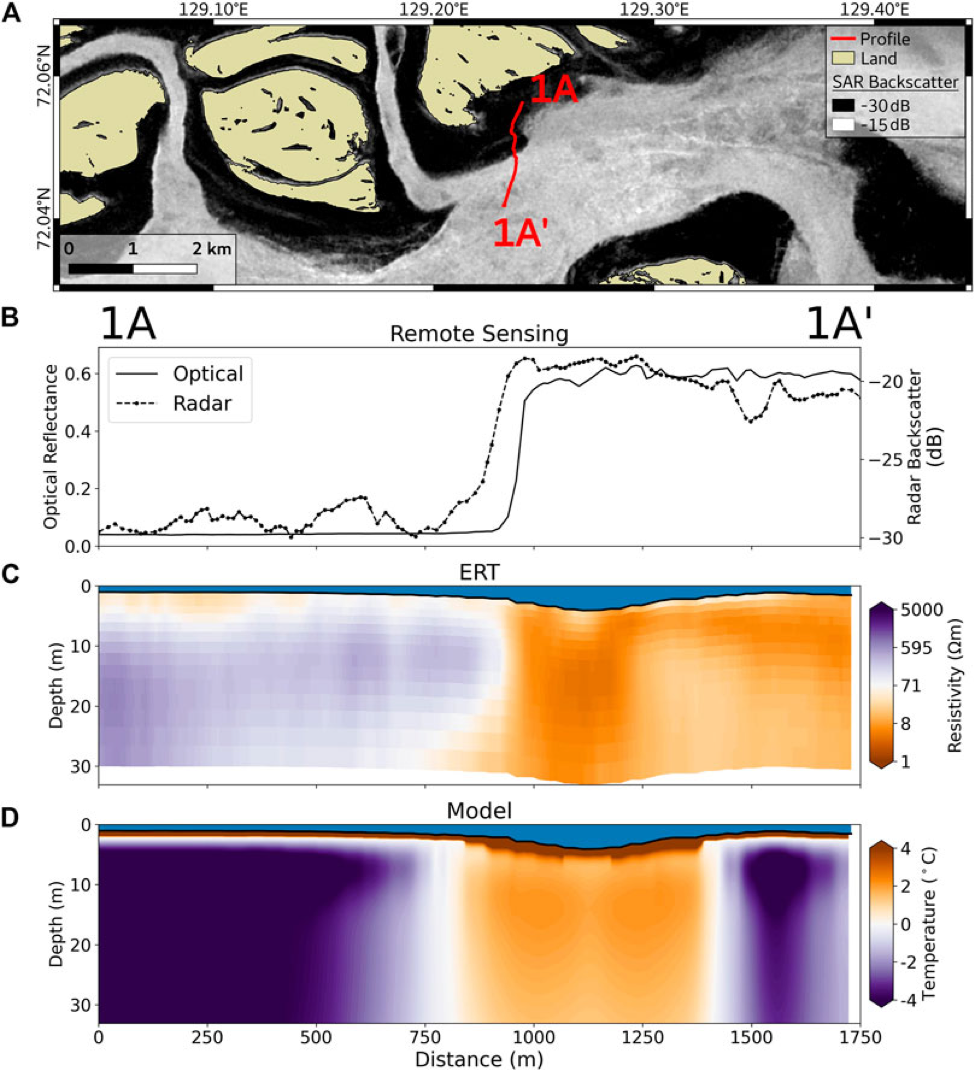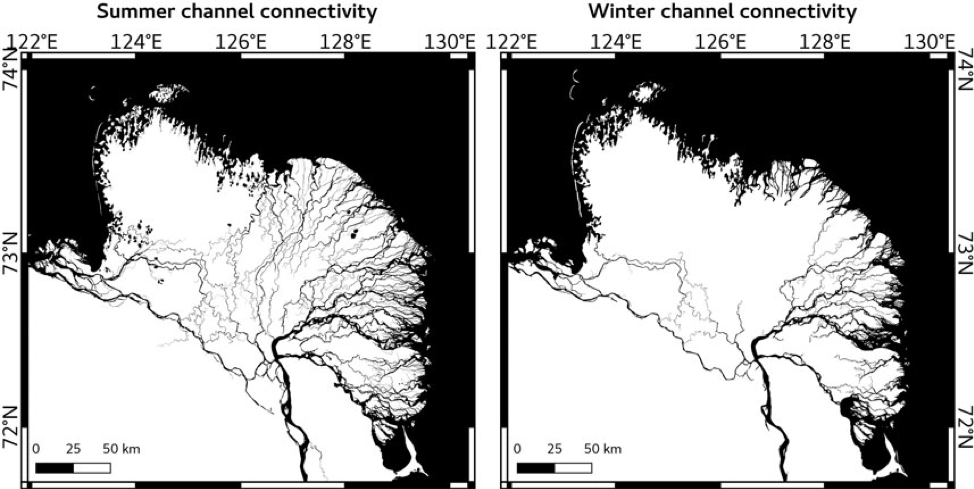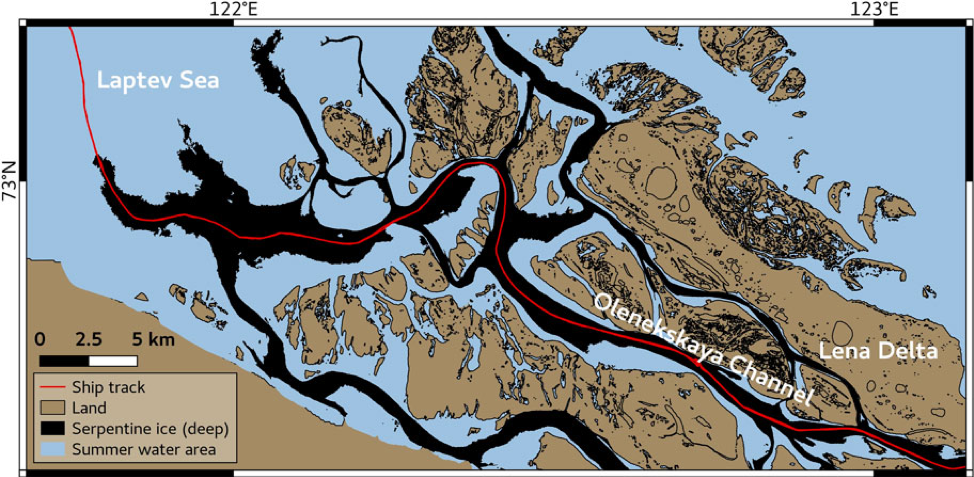Arctic deltas and their river channels are characterized by three components of the cryosphere: snow, river ice, and permafrost, making them especially sensitive to ongoing climate change. Thinning river ice and rising river water temperatures may affect the thermal state of permafrost beneath the riverbed, with consequences for delta hydrology, erosion, and sediment transport.
The study shows that the serpentine ice spatially coincides with the location of thawed riverbed sediment (talik) observed with in situ geoelectrical measurements and as simulated with the thermal model. The spatial correspondence between the river ice regime (bedfast or serpentine) and the thermal state of the sub-river sediments demonstrates the great potential of remote sensing to identify not only the long existing taliks beneath deep river channels but also areas, subject to potential change of the ice regime, which can, in turn, trigger either formation of new permafrost or thaw of existing permafrost beneath the riverbed.


Besides insight into sub-river thermal properties, the study shows the potential of remote sensing for identifying river channels with active sub-ice flow during winter vs. channels, presumably disconnected for winter water flow. These results reveals how bedfast ice limits hydrological routing in winter compared to summer in the Lena River Delta.

The results demonstrate that annual-scale monitoring of the ice regime (bedfast vs serpentine) and the deep channels position is possible. These maps may be used as an aid for summer navigation for shallow-draught vessels, particularly in regions where navigational charts may not be regularly updated (



